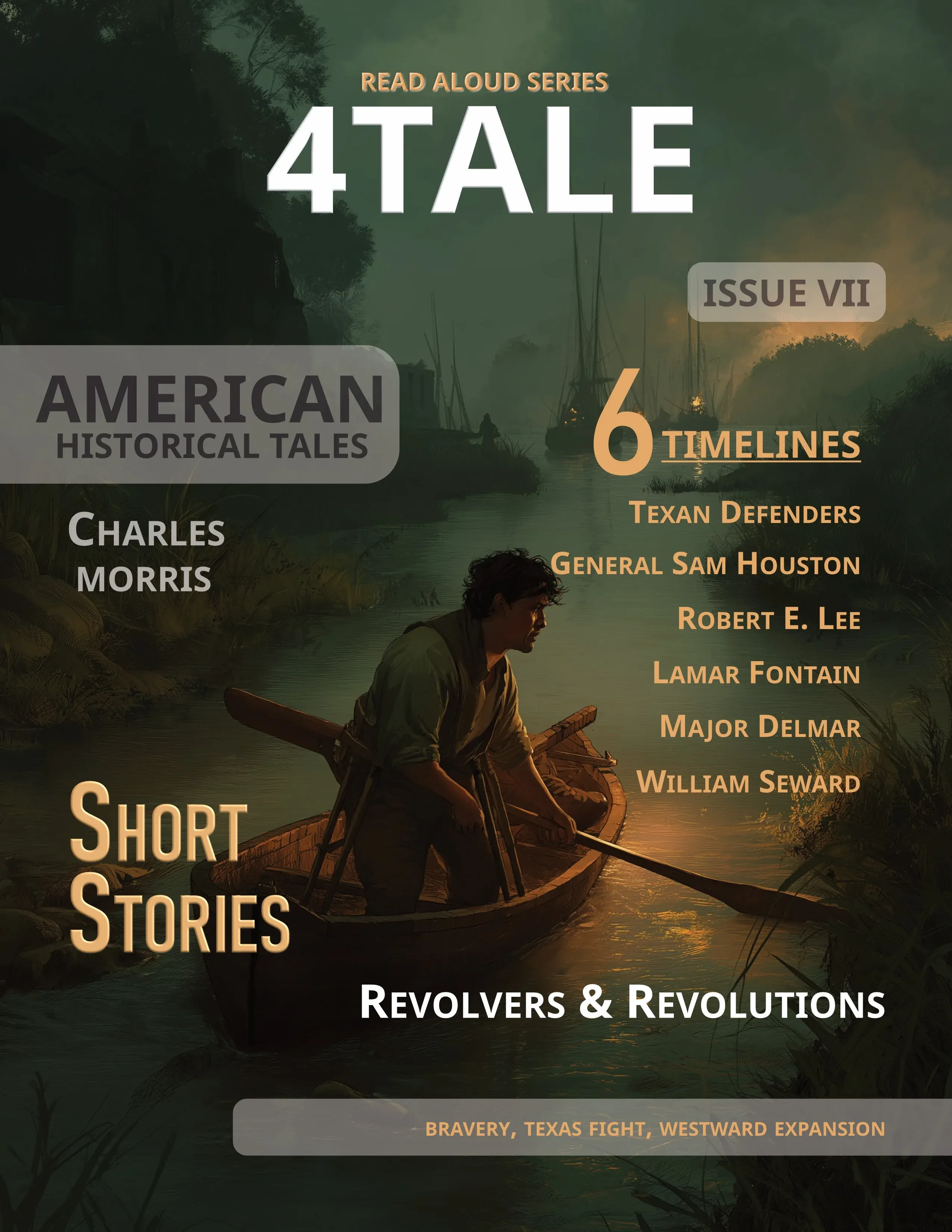In 1867, when the far-seeing Secretary Seward purchased Alaska from the Russian government for $7,200,000, there was an outcry of disapproval equal to that made when Louisiana territory was purchased from France in 1803. Many of the people called the region "Seward's Folly" and said it would produce nothing but icebergs and polar bears, and General Benjamin F. Butler, representative from Massachusetts, said in the House: "If we are to pay this amount for Russia's friendship during the war, then give her the $7,200,000 and tell her to keep Alaska." Representative Washburn, of Wisconsin, exclaimed: "I defy any man on the face of the earth to produce any evidence that an ounce of gold has ever been found in Alaska."
To-day Alaska is yielding in gold $10,000,000 per year; its fisheries are among the richest in the world, including more than half the salmon yield of the United States; its forests are of enormous value; its fur-seal harvest is without a rival; its territory is traversed by one of the greatest rivers of the world, two thousand miles long and with more than a thousand miles of navigable waters, and it promises to become an important farming and stock-raising region. As for extent, it is large enough to cover more than twenty of our States. In revenue it has repaid the United States the original outlay and several millions more; while, aside from its gold product, its fisheries have netted $100,000,000 and its furs $80,000,000 since its acquisition. Seward, then, was wise in looking upon this purchase as the greatest achievement of his life, though he truly said that it would take the country a generation to find out Alaska's value.
The most dramatic and interesting portion of the story of Alaska is its gold-mining enterprise, and it is of this, therefore, that we propose to speak. The discovery of placer gold deposits in British Columbia led naturally to the surmise that this precious metal might be found farther northward, and as early as 1880 wandering gold-hunters had made their way over the passes from Cassiar or inward from the coast and were trying the gravel bars of tributaries of the Yukon, finding the yellow metal at several places.
The first important find along the Yukon was made on Stewart River in 1885, about $100,000 being taken out in two summers. The next year a good find was made at Forty-Mile Creek, finds being made later on Sixty-Mile Creek, Birch Creek, and other streams. On Birch Creek arose Circle City, named from its proximity to the Arctic circle, and growing into a well-built and well-conducted little town.
Meanwhile a valuable find had been made on Douglas Island, one of the long chain of islands that bound the western coast line, and this has since developed into one of the richest mines in the world. It is not a placer mine, however, but a quartz mine, one needing capital for its development and with no charms for the ordinary gold-seeker. The gold is found in a friable and easily worked rock, enabling low-grade ores to be handled at a profit, and to-day fifteen hundred stamps are busy and the mines are highly profitable.
The placer miners, however, have no use for gold that rests in quartz veins and has to be obtained by the aid of costly stamping mills. The gold they seek is that on which nature has done the work of stamping, by breaking up the original veins into sands and gravels, with which the freed gold is mixed in condition to be obtained by a simple process of washing. The wandering miners thus prospected Alaska, following the long course of the Yukon and trying its tributary streams, many of them making a living, a few of them acquiring wealth, but none of their finds attracting the attention of the world, which scarcely knew that gold-seekers were at work in this remote and almost unknown region.
Thus it went on until 1897, when on July 16 a party of miners arrived in San Francisco from the upper Yukon with a large quantity of gold in nuggets and dust and a story to tell that deeply stirred that old land of gold. On the 17th another steamer put into Seattle with more miners and $800,000 in gold dust, nearly all of it the outcome of a winter's work on a small stream known as the Klondike, entering the Yukon about fifty miles above Forty-Mile Creek.
The discovery of this rich placer region was made in the autumn of 1896 by an Illinois man named George McCormick, who, in the intervals of salmon fishing, tried his hand at prospecting, and on Bonanzo Creek, a tributary of the Klondike, was surprised and overjoyed to find gold in a profusion never before dreamed of in the Alaskan region. The news of the find spread rapidly through Alaska and before winter set in the old diggings were largely deserted, a swarm of eager miners poured into the Klondike region, and the frozen earth was torn and rent in their eagerness to reach its yellow treasures.
The news of the discovery spread as far and fast as the telegraph could carry it. The richness of the find surpassed anything ever before found and the whole country was agog. The stories of wonderful fortunes made by miners were testified to by a display of nuggets and sacks of shining gold in stores and hotels, the find of one man being shown in a San Francisco shop window in the shape of one hundred and thirty thousand dollars worth of gold.
The old gold-fever broke out again as an epidemic. Such a stampede as took place had never before been seen. The stream of picturesque humanity that poured through Seattle and on to the golden north surpassed the palmy days of '49 when California opened its caves of Aladdin. Every steamer that could be made use of was booked to its full capacity, while many ardent gold-seekers were turned away. Every passenger and every pound of cargo that could be taken on these steamers was loaded and the hegira was almost instantly in full blast.
As it proved, the new find was in Canadian territory, a few miles east of the Alaskan boundary, but the flood of men that set in was mainly American. Many threw up good positions or mortgaged their homes for funds to join the mad migration, oblivious in most cases of the fact that they were setting out to encounter hardships and arctic extremes of temperature for which their home life had utterly unfitted them. Warnings were published that those who joined the pioneer flood faced starvation or death by freezing or hardship, but the tide was on and could not be turned, and before the autumn had far advanced thousands had landed at the mushroom settlements of Skagway and Dyea, laden with the effects they had brought with them and proposing to fight their way against nature's obstacles over the difficult mountain passes and along the little less difficult lakes and streams to the promised land of gold. A village of log houses and tents, known as Dawson, had sprung up at the mouth of the Klondike, and this was the mecca towards which the great pilgrimage set.
The struggle inland of the first comers was a frightful one. No roads or pack-trails existed over the rough and lofty passes of the coast range of mountains, and it was killing work to transport the many tons of equipments and provisions over the nearly impassable Chilkoot and White Passes. For those who came too late in the season it was quite impassable, the trails and rivers were stopped by snow and ice, and numbers had to endure a long and miserable winter in the primitive coast settlements or straggle back to civilization.
The terrors of that first year's battle with the unbroken passes are indescribable. Thousands of dead pack-horses marked the way. And the mountains once crossed and the waters reached new troubles arose. Boats had to be built for the long reach of navigation down the chain of lakes and the Yukon—many having brought the necessary boat timbers with them. Six hundred miles of waterways were to be traversed. On some of the short streams connecting the lakes there were dangerous rapids to be run, in which many lost their goods and some their lives. The early winter added ice to the difficulties of the way and the Yukon section of the trip was made by the later comers through miles of drift ice, grinding and ploughing its way to the peril of the boats, or water travel was checked by the final closing of the stream for the winter, leaving no resource but a long sledging journey over the snow.
Those who took the long voyage to the mouth of the Yukon and journeyed by steamer up that stream had their difficulties with ice and current, and it was not uncommon for them to be frozen in, leaving them the sole expedient of the dog sled, if they elected to proceed to the diggings without their supplies.
Dawson once reached, the trouble and hardship were by no means at an end. Having penetrated a total wilderness in an arctic climate, borne on by dreams of sudden fortune, the enthusiastic treasure-seekers found new difficulties awaiting them. There was no easy task of digging and panning, as in more favored climes. Winter had locked the golden treasures with its strongest fetters. The ground was everywhere frozen into the firmness of rock. In midsummer it thawed no more than three feet down, and eternal frost reigned below.
To reach the gold-bearing gravels the miners had to build fires on the frozen surface and keep these going for twenty-four hours. This would soften the soil to the depth of some six inches. This thrown out, new fires had to be kindled, and thus laboriously the miners burned their way down to the gold-bearing gravel, usually at a depth of fifteen feet. Then other fires were built at the bottom and tunnels made through the five feet or more of "pay-dirt," which was dug out and piled up to await the coming of flowing water in the spring, when the gold might be washed out in the rockers and sluices employed.
As may be seen, the buried treasures of these gravel beds were to be won in these pioneer years only by dint of exhausting labor and frightful hardship. They would never have been found at all had not the bars and shores of the streams yielded gold at the surface level. Yet the extraordinary richness of these gravels, from which as much as $50,000 might be obtained as the result of a winter's work, excited men's imaginations to the utmost, and the stream of gold-seekers continued year after year until Dawson grew to be a well-built and populous city and the yearly output of the Klondike mines amounted to more than $16,000,000.
The difficulty in reaching the mines grew less year by year. As early as 1898 a railway was begun across the White Pass. It now extends from Skagway more than a hundred miles inland, the lakes and streams being traversed by steamers, so that the purgatory of the early prospectors has been converted into the "broad and easy way" of the later sinners. The old method of burning into the frozen soil has also been improved on, steam being now used instead of fire and the pay-dirt reached much more rapidly and cheaply by its aid.
The Klondike region, though largely prospected and worked by Americans, is not in Alaska, Dawson lying sixty miles east of the border. The streams of Alaska itself, so far as they have yet been worked, are far less promising, and yet Alaska has a golden treasure house of its own that may yet prove as prolific as the Klondike itself.
This is at Nome, on the shores of Bering Sea, about twenty-five degrees of longitude nearly due west from Dawson, and a hundred and fifty miles north of the mouth of the Yukon. Here the sands of the sea itself and of its bordering shores have proven splendid gold bearers and have attracted a large population to that inhospitable region, in latitude sixty-five degrees north; here has grown up a city containing 25,000 inhabitants, and here may be seen the most northerly railroad in the world.
In 1898 a soldier, in digging a well on the beach at Nome, saw in the sands thrown up that alluring yellow glint which has led so many men to fortune and so many to death. The story of his find came to the ears of an old prospector from Idaho, who, too ill to go inland, was stranded in the military station of Nome. Spade and pan were at once put to work and in twenty days the fortunate invalid found himself worth $3000 in gold.
At Nome the gold was first found in the beach sands and even in the sands of the sea adjoining the beach, old Neptune being forced to yield part of the treasures he had taken to himself. Later, the bench of higher land stretching back from the beach and the sides of the down-flowing creeks were found to be gold-bearing, the bench gravels being from forty to eighty feet thick, with gold throughout. A heavy growth of moss covers this coastal plain, under which lie the frozen gravels, which are softened by the use of steam and thus forced to give up their previous freight. That is all we need say about the gold product of Alaska, further than to sum up that the territory yields about $10,000,000 per year, or with the Klondike about $25,000,000, these equalling nearly one-third the total production of the United States. Here is a fine showing for a region once deemed worthless.
Gold is an alluring subject, but Alaska has other sources of wealth which enormously exceed its golden sands in value. We have already spoken of the rich products of its fisheries and furs. The former include several species of salmon, which the Yukon yields in vast numbers; the latter embrace, in addition to the usual fur-bearing animals, the valuable fur-seal of the Aleutian Islands, a species found nowhere else. To these sources of wealth may be added the vast forests of valuable timber, especially of spruce, hemlock, red and yellow cedar, which are likely to become of great value in the growing extermination of the home forests of the United States.
Alaska also presents excellent opportunities in its coast districts for agriculture, most of the hardy vegetables and cereals here yielding good crops. But a more valuable outlook for the farmer appears to lie in the grazing opportunities of the land. In some localities along the south coast the grasses grow in splendid luxuriance, much of the grass being six feet high. On the higher elevations and in exposed places the grass is often too low for hay making but is admirable for grazing, the cattle that eat it growing very fat. Of these grass lands there are about 10,000 square miles, of which more than half can be utilized.
Stock raising, then, is likely to become a leading industry, and especially dairying, there being more meat than is needed by the sparse population. There are admirable dairy sites on the islands and mainland. The reindeer, recently introduced, are likely to prove invaluable to the natives, supplanting in great measure the dog for transportation purposes, and supplying also food and clothing. Reindeer milk makes excellent cheese, and in a few years there may be deer-meat for sale outside.
Such is the story of Alaska. It occupies much the same position on the west coast of America as Norway does on that of Europe, but has four times as wide a habitable area as Norway and a milder climate on its south coast lands. Therefore, as Norway sustains a population of 2,240,000, there is no special reason why Alaska may not yet possess a population of 3,000,000 or 4,000,000 and take rank as one of the important States of the American Union.







